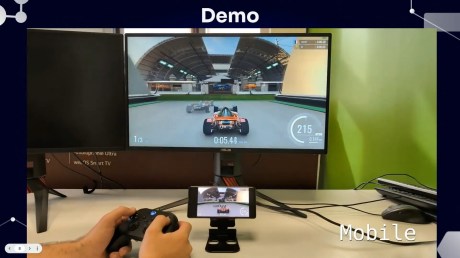Jean-Baptiste Kempf, known as one of the creators of VLC media player, recently presented Kyber. This new streaming technology promises to be revolutionary: the first users were amazed.
The whole world knows VLC Media Player, the audio and video playback software capable of decoding everything and its traffic cone icon. This open source project is undoubtedly one of the greatest prides in French technology, the use of bricks in many software programs around the world. One of its founders, Jean-Baptiste Kempf, seems about to repeat the experience with a new, equally ambitious and already very impressive project, Kyber.
This is once again an open source project, and once again we are going to talk about audio and video, but also control. Because it’s about competing with Xbox, PlayStation and why not, cloud gaming services like GeForce Now.
Kyber: what is it?
So what is Kyber? It is an entirely software, open source brick that allows you to take control of a machine remotely. We are therefore talking about video and audio streaming in one direction, to receive the stream, and controls in the other direction, with a gamepad or a keyboard/mouse pair. It is technology agnostic, the client is based on VLC and therefore promises to be available on Windows, GNU/Linux, macOS, Android, iOS, Apple TV, Android TV, Chromebook and web. On the server side, the technology is based on FFmpeg and therefore also works on Windows, GNU/Linux, Android or Mac platforms. In short, it’s universal.
Jean-Baptiste Kempf gave a complete presentation of his technology during a presentation at Paris Video Tech. You can find a rebroadcast with the video below, starting at 56:00.
A revolution for streaming video games?
The most impressive is the demonstration carried out by Jean-Baptiste Kempf. We see two machines side by side. The game runs on one machine locally, while the other streams it using Kyber. The difference between the two games is only 16 ms at 60 Hz, and can even go down to 10 ms with a 240 Hz screen. It is therefore almost imperceptible in game. The game displayed on the client can even be ahead of the server, if the latter is displayed on a slower screen. In other words, the image appears first on the client’s screen after streaming, rather than on the screen of the server sending the image.
Not everything is perfect. By Jean-Baptiste Kempf’s own admission, the video encoder shows its limits on large camera movements, which we already know on cloud gaming services, or more simply on videos hosted on Twitch and YouTube . The first demonstrations carried out by Kempf seem to have amazed the audience as revealed several testimonies.
And now ?
If this technology keeps its promises, we will have to hope for adoption by mainstream services. As a timetable, Kempf promises a usable and integrable project by mid-2024, with the first use cases covered from January 2024 such as Remote Desktop. We would imagine Valve adopting it for Steam’s Remote Play functions. The firm already bases several of its solutions like SteamOS on Open Source and has this PC DNA. Nvidia could also be interested in this new technological brick: Kyber can already use NVENC, the hardware encoder used by the brand in its graphics cards. The latency of local streaming with an Nvidia card, or with GeForce Now could be further improved.
Still, we can also wonder if Jean-Baptiste Kempf is not dreaming of launching his own cloud gaming service. He was the technical director of Shadow for a time, before the company was bought by OVHCloud.
Here, we’ve focused on gaming-related features, as that’s where latency (or lack thereof) can be very noticeable, but Kyber technology is set to take control of any PC. We are therefore thinking of teleworking uses where we could access a Windows or Mac PC remotely, from any device or a simple web browser. Here again the uses are very promising.




